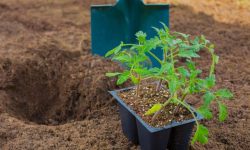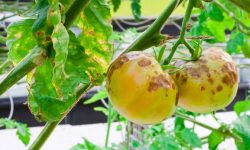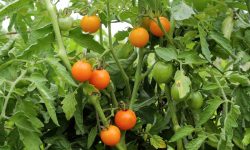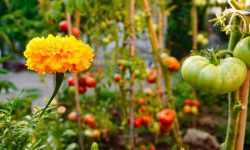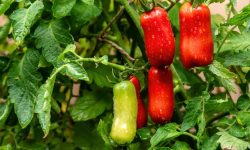Determining the optimal time to harvest jalapenos is essential to achieving the ideal balance of heat and freshness in the peppers. Jalapenos can be harvested at various stages of maturity, each stage offering distinct flavor profiles and heat levels.
Understanding the developmental signs of the fruit and environmental factors can help growers select the best harvesting window, maximizing quality and culinary value.
Table of Contents
Growth Stages of Jalapenos
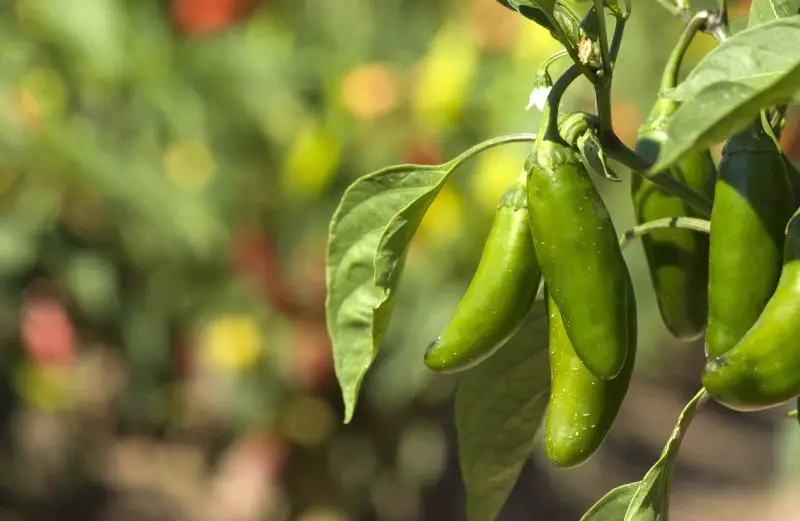
Jalapeno peppers begin as small, pale green buds located beneath the plant’s foliage. Over time, the fruits grow in size, their color gradually deepening to a darker green, and their skin thickens. Early in their development, jalapenos have a mild flavor and limited heat, as the capsaicin content—the chemical responsible for their spiciness—has not yet peaked. The flesh at this stage tends to be thinner and less dense.
As jalapenos reach full maturity, the pods stabilize in size and develop a firmer texture. At this green mature stage, capsaicin levels increase significantly, providing a moderate heat level suitable for fresh consumption. If left on the plant longer, jalapenos will begin to change color, turning bright red. This red stage signals full ripeness and is associated with the highest concentration of capsaicin, resulting in maximum heat and a more complex, slightly sweeter flavor.
The Significance of Corking in Jalapeno Maturity
One common indicator of jalapeno maturity is the presence of corking—small, brownish lines or cracks appearing on the skin of the pepper. These natural markings develop as the fruit expands rapidly, causing the skin to stretch and crack slightly.
Corking is generally considered a sign that the pepper has reached maturity and has accumulated higher levels of capsaicin. While some commercial growers may avoid corked peppers due to cosmetic reasons, many culinary uses benefit from the enhanced flavor and heat associated with this trait. Corking should be assessed alongside other maturity factors such as color and firmness to determine the best harvesting time.
Heat Levels and Harvest Timing
Jalapenos typically measure between 2,500 and 8,000 Scoville Heat Units (SHU), placing them in the medium heat category. The exact heat intensity depends on several factors, including the pepper variety, growing conditions, and especially the timing of harvest.
Harvesting jalapenos at the mature green stage provides moderate heat with a fresh, crisp texture. Leaving the fruit to ripen to the red stage generally results in higher heat due to increased capsaicin production during the final ripening phases. Environmental conditions such as temperature, sunlight exposure, and water availability also influence capsaicin synthesis. Warmer and drier climates tend to produce spicier peppers, whereas cooler or wetter environments may yield milder fruits.
Estimating Harvest Time Based on Planting Dates
Most jalapeno varieties reach maturity approximately 70 to 85 days after transplanting seedlings into the garden. This timeframe serves as a general guideline for estimating the harvesting window.
However, climatic variations and micro-environmental conditions can affect the exact timing. Periods of intense heat can accelerate fruit development, while cooler weather may delay ripening. Regular observation of the plants is recommended to accurately identify maturity, rather than relying solely on the calendar.
Influence of Soil and Watering on Ripening and Heat
Soil quality plays a critical role in the growth rate and flavor development of jalapenos. Well-drained, nutrient-rich soil supports steady fruit development, leading to uniform ripening and consistent quality. Conversely, poor soil conditions can hinder growth and delay maturity.
Water management also impacts both fruit size and capsaicin levels. Consistent, moderate watering encourages healthy fruit development, whereas irregular watering—such as cycles of drought followed by heavy irrigation—can stress the plants. Controlled water stress, especially during the late stages of fruit maturation, has been shown to increase capsaicin concentration, thus intensifying heat levels. Care must be taken, however, to avoid excessive water stress that could damage the plant or reduce yield.
Assessing Fruit Firmness and Weight for Harvest Readiness
Firmness and weight are practical indicators used to determine jalapeno readiness for harvest. Mature jalapenos typically feel dense and have tight, smooth skin without soft spots or blemishes. They also exhibit a noticeable heft relative to their size, signifying fully developed flesh and seeds.
Fruits that feel hollow or lightweight are likely immature and may lack sufficient heat or flavor. On the other hand, overly soft or wrinkled peppers may be overripe, losing desirable texture but still suitable for processing methods such as drying or smoking.
Harvesting Strategies to Promote Continuous Production
Regular harvesting of mature jalapenos encourages plants to produce more fruit throughout the growing season. Leaving many mature peppers on the plant signals the plant to slow flowering and fruiting processes. Timely removal of ripe fruits sustains the plant’s energy towards continued fruit production.
A balanced harvesting approach involves picking ripe green peppers for immediate use while leaving a portion to mature further to red, catering to diverse culinary needs such as fresh dishes, sauces, or dried products.
Variations in Harvest Timing Among Jalapeno Varieties
Different jalapeno cultivars exhibit variations in growth rate, fruit size, skin texture, and ripening time. For example, early-maturing varieties may be ready to harvest in as little as 65 days post-transplant, suitable for regions with shorter growing seasons. Other varieties produce larger fruits or yield more extensively but require longer maturation periods.
Skin characteristics such as susceptibility to corking also vary by variety. Understanding the specific traits of each cultivar aids in optimizing harvest timing and maximizing yield and quality.
Optimal Time of Day for Harvesting
The timing of daily harvesting can influence the freshness and texture of jalapenos. Harvesting in the early morning, when temperatures are cooler and plants are well-hydrated, helps preserve the fruit’s crispness and moisture content.
In contrast, harvesting during the heat of midday or late afternoon may result in slightly softer fruit due to exposure to higher temperatures. For peppers intended for immediate fresh consumption, morning harvests are recommended. When peppers are destined for drying or processing, the time of day is less critical.
Best Practices for Post-Harvest Handling and Storage
Proper handling after harvest is crucial to maintaining jalapeno freshness and quality. Peppers should be handled gently to avoid bruising or skin damage. Using shallow containers or trays minimizes pressure on the fruits, reducing the risk of soft spots.
For fresh storage, jalapenos should be kept in breathable packaging within refrigeration to prolong shelf life, typically lasting up to one week. To preserve maximum heat and texture, consumption within three to four days is ideal. For longer-term storage, jalapenos can be frozen, pickled, or dried, though these methods alter texture and flavor.
Identifying Overripe Jalapenos
Overripe jalapenos display characteristics such as wrinkled skin, soft or mushy spots, and faded coloration. Prolonged ripening on the plant, especially after reaching the red stage, can lead to splitting of the fruit. While still edible, overripe peppers lose crispness and fresh flavor but are well-suited for making smoked products like chipotle peppers.
Allowing a select number of peppers to overripen can be a strategic choice for certain culinary applications, though care must be taken to avoid pest infestation or disease associated with extended fruit retention.
Managing Harvests Ahead of Frost
In temperate regions, the approach of first frost marks the end of the jalapeno growing season. Exposure to frost causes cell damage in fruits left on the plant, leading to softening and spoilage.
To mitigate losses, growers should perform a final harvest before frost, collecting all peppers regardless of maturity. Even immature fruits can be utilized for pickling or cooking, ensuring no edible product goes to waste.
Using Taste as a Guide for Harvest Timing
Ultimately, the most reliable method for determining jalapeno readiness is direct tasting. Variability among plants, seasons, and even individual fruits means that observational indicators may not fully capture flavor or heat.
Sampling peppers from the plant during the maturation phase provides immediate feedback on optimal harvest timing, allowing adjustments based on desired culinary characteristics.
FAQs About When to Pick Jalapenos
How can I tell if a jalapeno is ready to pick?
A jalapeno is ready to pick when it reaches full size (about 3 to 4 inches long), has a firm texture, and its skin is dark green and glossy. Additionally, the presence of corking (small brown lines or cracks) often indicates maturity. For maximum heat, some growers wait until the jalapeno starts turning red.
Does the color of the jalapeno affect its heat level?
Yes, the color correlates with heat. Green jalapenos generally have moderate heat and crispness, while red jalapenos are fully ripe with higher capsaicin levels, resulting in greater spiciness and a sweeter, more complex flavor.
Can I pick jalapenos before they are fully ripe?
Yes, jalapenos can be harvested at the mature green stage for fresh use with moderate heat. Picking them earlier results in milder peppers, but harvesting too early may lead to thinner flesh and less flavor.
How does watering affect the heat of jalapenos?
Watering influences plant stress and capsaicin production. Consistent, moderate watering promotes healthy fruit growth, but controlled water stress near harvest time can increase capsaicin concentration, thereby enhancing the pepper’s heat.
What is corking and why is it important?
Corking refers to the small brown cracks or lines on the jalapeno skin caused by rapid fruit growth. It is a natural sign that the pepper has matured and often correlates with higher heat levels.
When is the best time of day to harvest jalapenos?
Harvesting in the early morning is ideal because peppers are cooler and retain moisture, resulting in crisper texture. Afternoon harvests may produce slightly softer peppers due to heat exposure.
How long do fresh jalapenos last after harvesting?
Fresh jalapenos stored properly in the refrigerator can last up to one week, but for the best heat and texture, it is recommended to use them within three to four days.
Can overripe jalapenos still be used?
Yes, overripe jalapenos that have turned red and developed wrinkles can be used for drying, smoking (to make chipotles), or cooking, although their texture and fresh flavor may be diminished.
How does frost affect jalapeno plants and fruit?
Frost damages jalapeno plants and fruits by causing cell rupture, leading to soft, watery, and spoiled peppers. It is important to harvest all remaining fruits before the first frost to avoid loss.
Does jalapeno variety affect harvesting time?
Different jalapeno varieties vary in maturation period, size, and heat level. Early-maturing varieties may be ready in as few as 65 days, while others take longer. Understanding the specific variety helps optimize harvest timing.


